There are so many types of lilies, it can be hard to choose. Here's help deciding which ones will grow best in your garden.
10 Types of Lilies To Grow in Your Garden
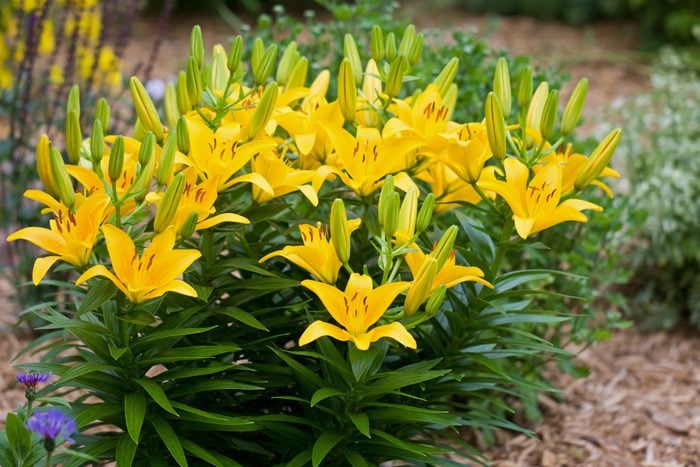
Asiatic Hybrid Lilies
Asiatic hybrid lilies grow from two to four feet tall and come in colors from white to pink, yellow and orange, with many variations. Generally hardy in U.S. Department of Agriculture Plant Hardiness Zones 3 through 8, they do best in full sun, but will tolerate a bit of shade.
Asiatic lilies are some of the earliest to bloom, starting in early summer. Purchase them as bulbs to plant in spring or fall, or as blooming plants at a garden center. Keep watered until established. Find out if you can replant potted plants.
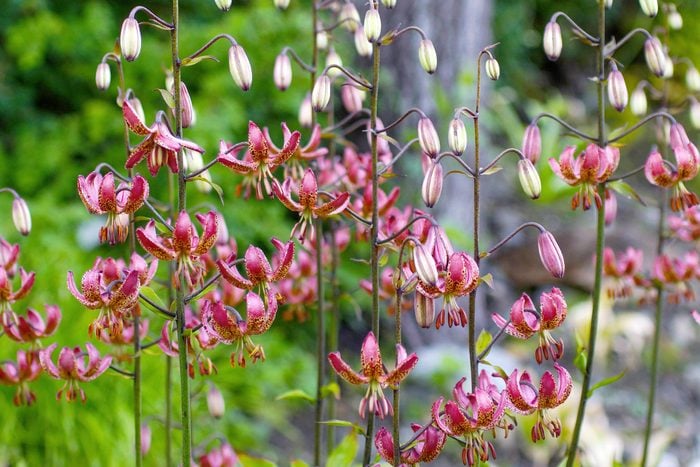
Martagon Lilies
Martagon lilies are hardy in USDA Zones 3 through 8 and do well in sun and part-shade. These can grow from three to four feet tall or more, depending on the variety. They bloom June through August.
Purchase bulbs of martagon lilies to plant in fall and give them some time to grow. Once established, they don’t like to be moved. Cut off spent blooms and let the plant keep growing to gain strength for the next year.
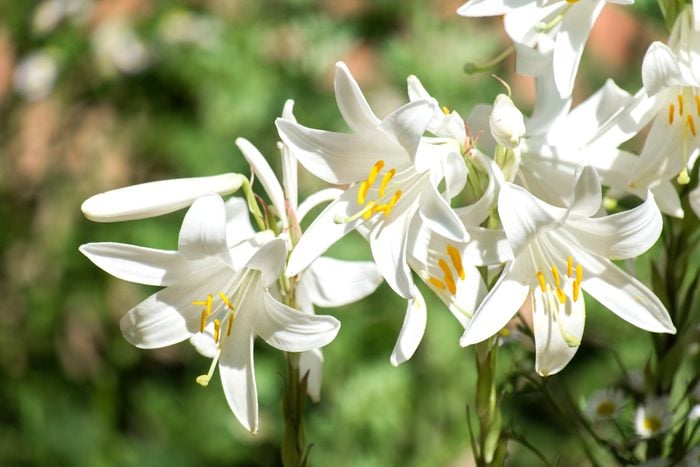
Candidum Lily
If you love history, you might like the candidum lily, Lilium candidum, commonly called Madonna lily. These are the ones most often seen in old paintings and stained-glass church windows. The Madonna lily has been grown in gardens for centuries.
Generally hardy in Zones 6 through 9, plant bulbs for these lilies in fall. They will grow up to six feet tall with white blooms in late spring to early summer. They grow best in a sunny spot with a bit of shade in the afternoon, with well-drained soil.
Candidum lilies go dormant in late summer and send up a rosette of leaves in fall to overwinter. Although it can be tricky to find the right spot for it, if you do, you’ll have an interesting historic plant in your garden. Looking for more spring flowers? Learn how to care for Easter cactus.
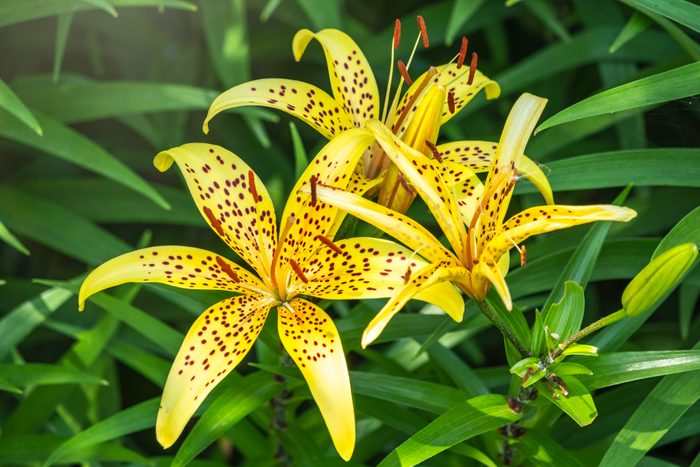
American Hybrid Lilies
As the name implies, American hybrid lilies are bred from lilies native to North America. The petals of the flowers often have spots, so they are sometimes called tiger, panther or leopard lilies.
Those common names are also given to many flowers that aren’t American hybrid lilies. Most actual American hybrid lilies come from the lily Lilium pardalinum, hardy in Zones 5 through 10.
Plant these lilies in full sun with moist, well-drained soil for mid-summer flowers. When purchasing these lilies, especially the species L. pardalinum, make sure it was cultivated in a nursery and not collected in the wild. That’s because there are fewer in the wild each year as wilderness areas are developed.
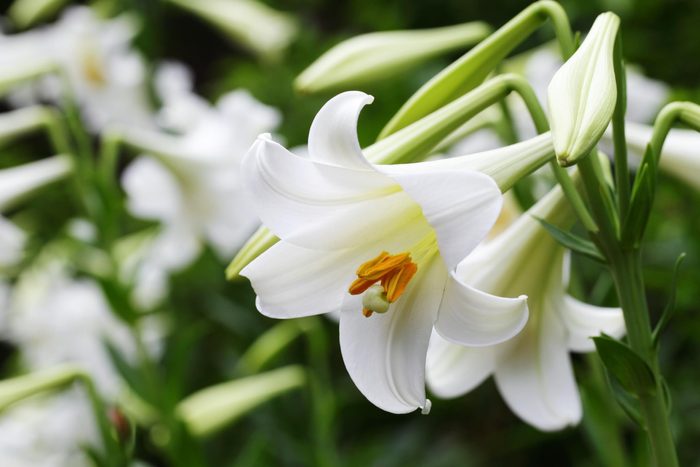
Easter Lilies
Walk into any big box store the week before Easter and you’ll probably see Easter lilies for sale. These lilies, with the plant name Lilium longiflorum, form their own lily group and are hardy in Zones 3 through 8.
Yes, you can plant the potted one you bought for Easter in your garden after the threat of frost. Just be mindful it was probably forced into early bloom to be ready for Easter. In your garden, an Easter lily will be a taller plant and bloom later in the summer.
Safety note: This lily, like many others, is poisonous to cats. If you suspect your cat ate a leaf, call your vet right away for treatment.
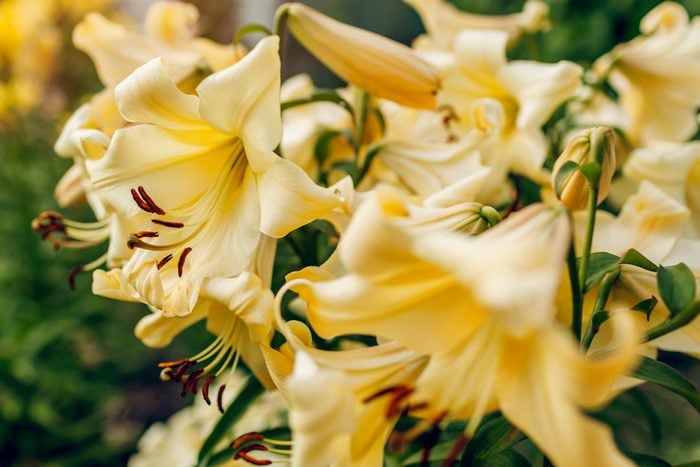
Trumpet and Aurelian Hybrid Lilies
Trumpet and Aurelian hybrid lilies are big, tall plants with big flowers that “announce” themselves in mid to late summer.
Like many lilies, trumpet lilies are hardy in Zones 3 through 8, although some varieties can take the heat in Zone 9 and even 10. Trumpet lilies prefer full sun and well-drained soil. Because they grow so tall, you may need to stake them to keep them from flopping over.
Be careful not to damage the bulb when inserting a stake next to your growing lily plant. If you know a lily will need to be staked, the North American Lily Society suggests starting with a small stake when planting the bulb. Then as the plant grows, replace that stake with a larger one in the same hole and loosely tie the lily stem to it.

Oriental Hybrid Lilies
As the name implies, Oriental hybrid lilies are bred from those native to Asian countries.
One of the most popular is ‘Stargazer‘ which has dark pink petals edged in white. Hardy in Zones 3 through 9, it’s shorter than many other lilies, often only two feet tall. The fragrant blooms show up in mid-summer.
Purchase bulbs to plant in the spring. Choose a well-draining location with full sun. As with all other lilies, removing spent flowers lets the plant grow stronger. Applying a layer of mulch in late fall helps the bulbs survive winter in the ground.
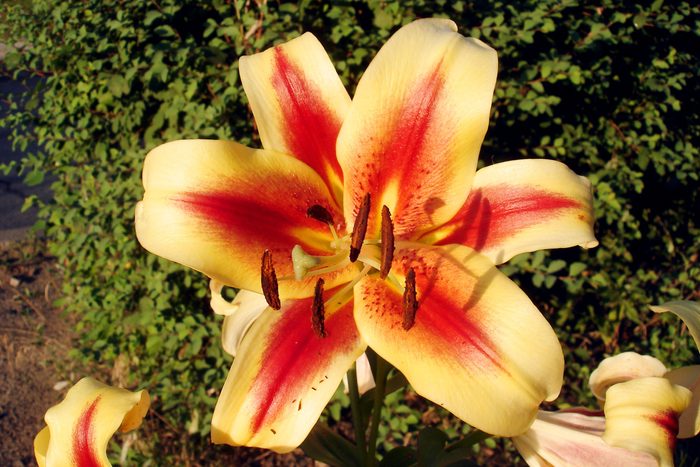
Orienpet Lilies
Oreinpet lilies are hybrids between oriental and trumpet lilies, prized for their beautiful, highly fragrant flowers.
Plant these where you plant other lilies, in well-drained soil and full sun with a bit of shade in the afternoon. Orienpet lilies will grow up to four feet tall with strong stems, so they may not need to be staked.
Purchase bulbs to plant in late fall or early spring, as soon as you can work the soil. They should bloom in mid-summer. While some lilies like to be left alone for years, you can dig up and divide orienpet lilies every four to five years.
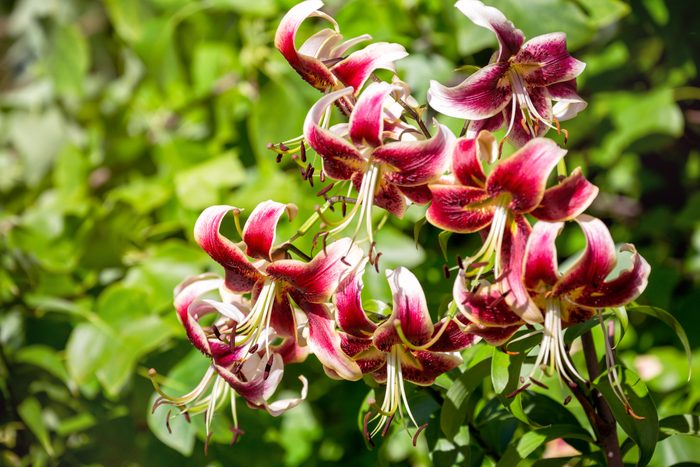
Scheherazde Lilies
‘Scheherazde‘ deserves a place on any list of great lilies. This popular orienpet hybrid lily features striking red petals edged in white that curve back.
Once established, Schererazde can reach impressive heights, up to eight feet tall. Fairly easy to grow, these would be a good first lily for anyone in Zones 4 through 8 adding to a perennial garden.
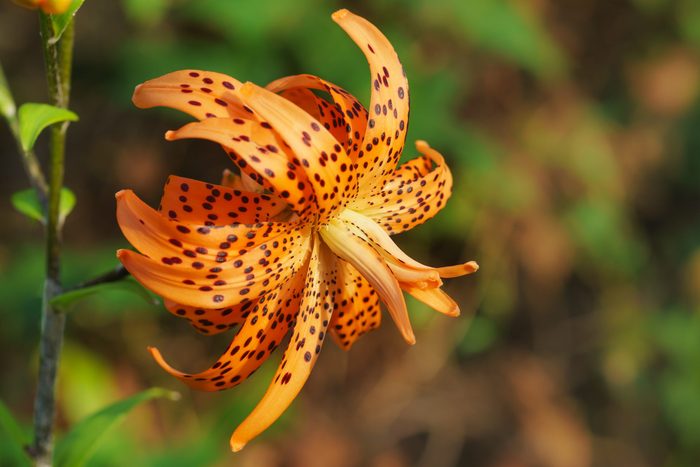
Flore Pleno Lilies
Whenever you see a flower described as ‘Flore Pleno’ it usually means it has many extra flower petals. That’s definitely true for Lilium lancifolium ‘Flore Pleno’, commonly called Double Tiger Lily.
Hardy in Zones 3 through 8, this lily prefers full sun. Once established, it will come up each year, and may even multiply by dropping little black bulbs that form in the leaf axils. These bulbils, as they are called, will grow to produce more plants.
Remove the blooms once they’ve faded and allow the foliage to die back naturally.
